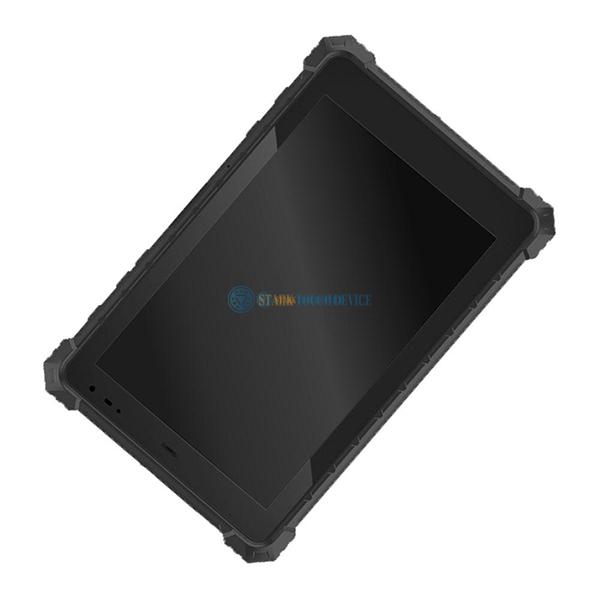Welcome STARK TOUCH DEVICE!
Solutions
Tips for cleaning oil stains on the exterior of industrial control computers
Practical Techniques for Removing External Oil Contamination from Industrial Control Computers
Industrial control computers operating in manufacturing, automotive, or food processing environments often accumulate external oil residues from lubricants, coolants, or airborne grease. These deposits compromise aesthetics, degrade component seals, and may attract additional dirt. Effective cleaning requires understanding oil types, selecting appropriate methods, and preventing future contamination.

Identifying Oil Types and Contamination Patterns
1. Recognizing Common Oil Sources
Industrial environments expose computers to diverse oils: synthetic lubricants used in CNC machinery, mineral-based hydraulic fluids, or vegetable oils in food-grade facilities. Each oil type behaves differently—synthetic oils may penetrate seals faster, while vegetable oils can become sticky and attract particulates. Visual inspection under bright lighting helps identify residue patterns: thin films indicate airborne spray, while drips suggest direct contact with leaking equipment.
2. Assessing Contamination Severity
Light oil coating on chassis surfaces requires different treatment than heavy, caked residues near cooling vents. Use gloves to touch-test surfaces: fresh oils feel slick, while aged residues may appear gummy. For computers in humid environments, check for oil-water emulsions that form white, pasty deposits on metal parts. These require more aggressive cleaning to prevent corrosion.
3. Mapping High-Risk Zones
Prioritize cleaning areas near fluid lines, robotic arms, or conveyor systems where oil splashes are frequent. Monitor vents and cable entry points, as oils can wick into enclosures through gaps. Document contamination hotspots to focus maintenance efforts and identify opportunities for equipment relocation or protective shielding.
Gentle Cleaning Methods for Sensitive Components
1. Dry Cleaning for Light Residues
For fresh oil films, start with lint-free microfiber cloths dampened with isopropyl alcohol (70% concentration). Wipe in a single direction to avoid spreading residues. Use soft-bristled brushes to dislodge oils from texture surfaces like fan grilles. For recessed areas, wrap a cotton swab in cloth and gently rotate to absorb oils without leaving fibers behind.
2. Emulsifying Agents for Stubborn Deposits
Heavy oil buildup responds well to mild detergents mixed with warm water. Create a 1:10 solution of dish soap (pH-neutral) and distilled water. Apply with a sponge, allowing the solution to sit for 2–3 minutes to break down oils. Avoid abrasive scrubbers that may scratch anodized aluminum or painted surfaces. Rinse with a damp cloth and dry immediately with compressed air or a second cloth.
3. Solvent-Free Degreasing Alternatives
In environments where solvents are restricted, use citrus-based cleaners or baking soda pastes. Mix three parts baking soda with one part water to form a thick paste. Apply to oily areas and let sit for 15 minutes before wiping. The alkaline nature of baking soda neutralizes acidic oils while being safe for most plastics and metals. For persistent residues, repeat the process or combine with gentle agitation using a soft toothbrush.
Protective Measures to Minimize Future Contamination
1. Physical Barriers and Shielding
Install transparent acrylic or polycarbonate shields around computers exposed to direct oil splashes. Ensure shields have adequate ventilation holes (≤3mm diameter) to prevent heat buildup. For cable entry points, use rubber grommets or silicone seals to block oil wicking. In extreme cases, enclose computers in NEMA 4X-rated cabinets with positive pressure ventilation to repel contaminants.
2. Coating Applications for Resistance
Apply hydrophobic or oleophobic coatings to chassis surfaces prone to oil adhesion. These nanocoatings create a smooth barrier that oils cannot penetrate. For DIY solutions, mix a 1:1 ratio of white vinegar and water, spray onto surfaces, and wipe dry. The acidic vinegar alters surface tension, reducing oil stickiness. Reapply coatings every 6–12 months depending on exposure levels.
3. Operational Adjustments to Reduce Exposure
Relocate computers away from oil sources where possible, maintaining at least 1 meter of clearance from fluid lines or lubricated machinery. Adjust airflow patterns using fans or ducts to direct oil-laden air away from enclosures. Train operators to wipe down equipment daily using designated oil-absorbent cloths, preventing residues from hardening over time.
Handling Oil Contamination on Connectors and Ports
1. Safe Cleaning of USB and Ethernet Ports
Oil in connectors can cause intermittent connections or short circuits. Use compressed air (≤5 PSI) to blow out loose particles, followed by a cotton swab dipped in 99% isopropyl alcohol. Rotate the swab gently to avoid damaging pins. For stubborn oil in recessed areas, use a syringe to inject alcohol and let it evaporate naturally. Never insert metal tools into ports.
2. Protecting Power Supply and Fan Connectors
Power connectors coated in oil may overheat. Disconnect power before cleaning. Wrap connectors in paper towels soaked in alcohol, then seal in plastic bags for 10 minutes to dissolve oils. Remove and wipe dry with a fresh cloth. For fan connectors, use a toothpick wrapped in alcohol-dampened cloth to clean between pins without bending them.
3. Maintaining Seal Integrity
Oil can degrade rubber seals around doors or vents. Inspect seals monthly for swelling or cracking. Clean seals with a soft brush and alcohol, then apply a thin layer of food-grade silicone grease to restore flexibility. Avoid petroleum-based lubricants that may react with oils and accelerate seal deterioration.
By combining targeted cleaning techniques with preventive strategies, industrial operators can maintain computer reliability in oil-prone environments. Regular inspection and proactive maintenance reduce the risk of hardware failures caused by oil-related corrosion or thermal issues.


